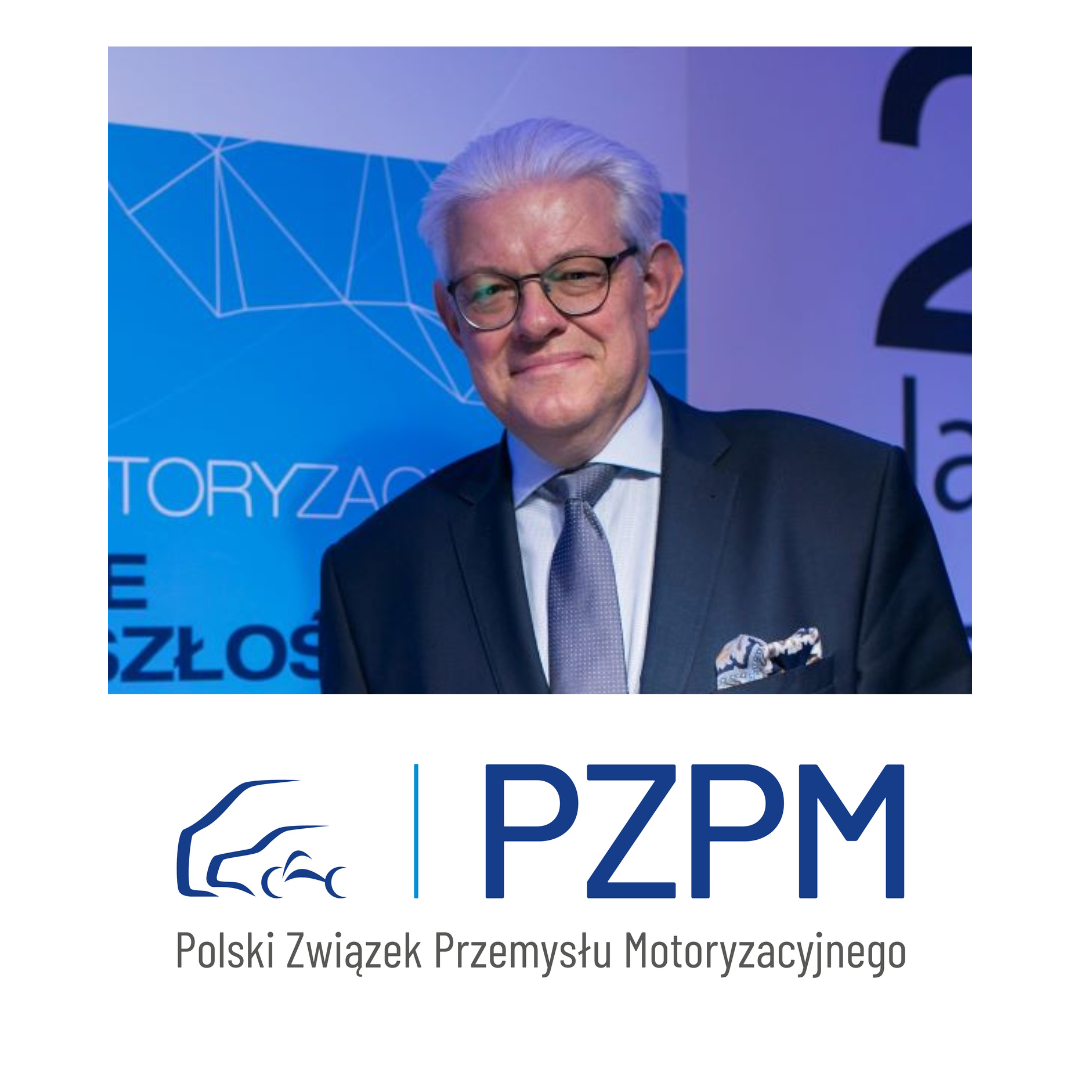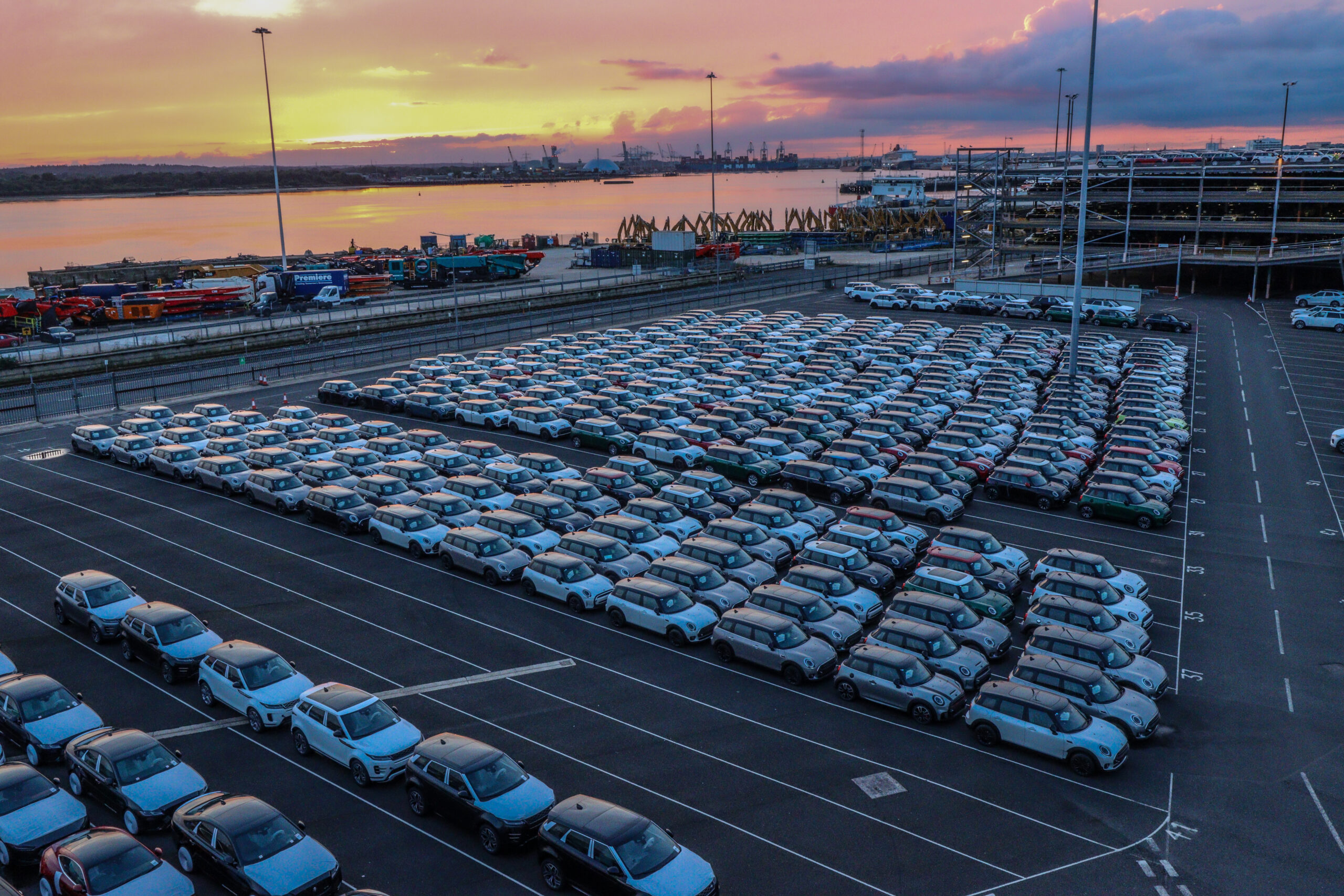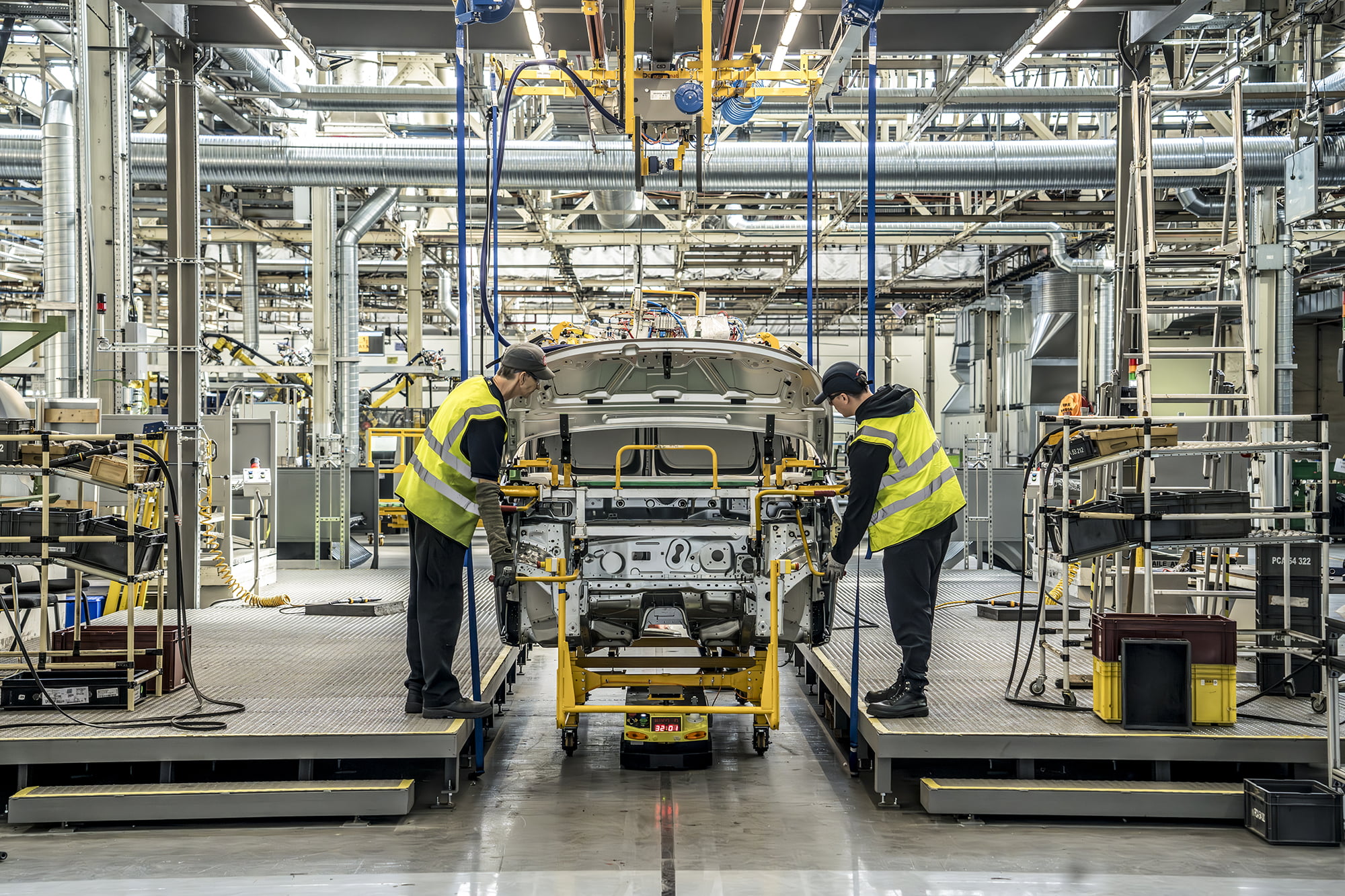PZPM: current Polish automotive landscape and opportunities
Jakub Faryś, President of the Polish Automotive Industry Association (PZPM) shares their outlook on current challenges and opportunities in the Polish automotive sector in November’s SMMT International Update.

Jakub Faryś, President of PZPM
About Polish Automotive Industry Association (PZPM):
This year marks the 30th anniversary that the Polish Automotive Industry Association (PZPM) was established. PZPM is the biggest Polish organization of automotive industry employers – consisting of associates from 57 companies that are representatives of producers and manufacturers of vehicles: buses, trucks, cars, motorcycles, mopeds and body manufacturers in Poland. PZPM responds to challenging and crisis situations, is familiar with issues of the sector and is seeking for ways to have them solved. It also serves to create optimum conditions for its member organisations to do business. The pandemic and the semiconductor crisis have taken their toll on passenger car registrations in Europe and Poland. Registration figures dropped by approx. 20 per cent on average versus pre-pandemic times and it’s a lot and we are now witnessing the most dramatic slump in passenger car registrations in Europe in the past two decades. The semiconductor crisis is the main reason behind the ultimate disruption of the automotive market; its fallout includes extended waiting time for new cars and limited range. It also affects EVs as you need to wait up to a year to have the vehicle delivered.
Current Polish automotive landscape – challenges and opportunities:
European Union have stuck to introduce hefty charges for first registration of ICE vehicles in Europe by 2035. Though Poland is in the vanguard of countries that are moving away from the diesel drive, but we have a lot of catching up to do in terms of zero-emission vehicles as country-specific conditions must be taken into consideration. The situation is completely different, than in countries which have a very well-developed EV charging network. Problems are also anticipated with the availability of electric energy, and they are not only related to its shortage, but also the location.
Electric energy must be available anywhere where it is needed to make vehicle charging possible and whenever charging stations are to be installed. But first, electricity needs to be generated and later transmitted. These issues are hence related to power production and transmission, and so far, energy transmission seems to pose more challenges in Poland than its generation.
Another major problem is distribution of charging stations. Residential buildings were not designed with high power consumption in mind. The overwhelming majority of apartments blocks in Poland were built long before the 1990s and there are few residential buildings where charging stations may be installed in the garage, because there is simply no garage at all. Residents will need to use public charging stations, and we estimate that when electric vehicles gain foothold in Poland, most charging cycles will account for public terminals. In addition, the charging infrastructure is in its infancy, while the state aid will be essential to add momentum to its development, because the market won’t commit itself unless it has confidence that charging stations will be connected to the grid and that the venture will be profitable. A charging station may be located practically anywhere, but electric cables cannot be routed anywhere you like. Transition to electric road transport seems to be even more challenging. The biggest issue in the long-term perspective is availability of electric power, what requires development of new power stations and transmission networks, and consequently the availability of charging stations.
Charging of trucks is even more challenging than charging passenger vehicles as it is more time-consuming and requires more power. Poland is currently home to barely 16 electric heavy-duty vehicles, but their number is expected to increase in the not-so-distant future. Ultimately, we will need to renew the entire HDV fleet and develop a dedicated network of charging stations, virtually from scratch. A battery-powered electric motor of a tractor unit will have a range of 300-400 km, what corresponds to the distance that a driver may cover in line with working time regulations. Their truck will be charged only when the driver has a mandatory one-hour break, and if we factor in main transport corridors in Poland, several hundred stations are needed to support heavy-duty vehicles, including approx. 200 megawatt charging stations with approx. 1.5 MW connectors. If a single parking site features 30 places, you need 60 on both sides of the road. That means that a single charging hub requires at least 60 MW worth of power and there are no such locations today. Secondly, carriers are taking their time to renew their fleets, because electric trucks are costlier, what means that the price of their transport performance will also be much higher, unless the cost of ownership, which is mainly the cost of electricity, is significantly lower than the cost of fuel.
Without a doubt, we have come to live in exciting times to witness watershed developments in the automotive sector. The industry which was recently forced to navigate the fallout of the crisis trigged by the pandemic, disrupted semiconductor supplies and the war in Ukraine has also been challenged to meet extremely ambitious reduction targets and, in not-so-distant future, transition to new drives. Achievement of its targets depends not only on automotive manufacturers, but also on many other players.
Automotive Production in Poland 2022
Passenger cars:
In August 2022, 16.8 thousand passenger cars were produced, 4.9 thousand units more than a year earlier (+41,2% y/y) and 16% less than in 2019 before the pandemic outbreak. Compared to the previous month, the generated result is lower by 9,6 thousand units. (-36.4%) and the lowest in the last four months. This year, only in January (14,5 thousand) less cars left the plants than in August this year. Usually, the August results are lower due to the holiday season and production shutdowns, but last month’s result is the weakest since 2004, excluding last year (11.9 thous.), when the industry suffered most from the semiconductor shortage.
From January to August 2022 a total of 162.7 thousand passenger cars left the production lines in Poland. The result achieved after eight months remains in the negative and is lower by 18,9 thousand units (-10.4% y/y) than reached in the corresponding period of 2021. In contrast, compared to pre-pandemic 2019 (295 thousand units) it is lower by 132,3 thousand units (-45,0%). The number of cars produced in the first eight months of this year still remains the lowest in the history of the current century as does the monthly average of 20,3 thousand units. In the previous pandemic years 2020 and 2021, it was 23.2 and 21.7 thousand units, respectively.
Commercial vehicles:
In August 2022, production of trucks (light, medium and heavy trucks and tractors) ended at 14,763 units, which is 9,897 units higher than the previous year. (+203,4%). However, the result is lower than in July by 3 047 units. (-17.1% m/m), when 17 810 vehicles left Polish plants.
During the first eight months of 2022, 124 949 trucks left the plants. This result is 14 663 vehicles (+13.3% y/y) higher than in the same period of last year and 18 023 units higher than that recorded a year earlier in 2020. Still, 13 416 vehicles (-9.7%) fewer cars left Polish factories between January-August this year than in the peak year 2019.
Despite the ongoing armed conflict in Ukraine, which is of great importance for the automotive industry and despite the general geopolitical, economic and energy situation – the performance in the truck segment in August can be considered as a success especially as manufacturers continue to face disruptions in the supply of electronics and other components for the manufacturing process. High inflation and increasing costs of transport, raw materials and consumables additionally affected the market. Uncertainty regarding the price and availability of energy raw materials (especially gas), which are key for planning and maintaining continuity in production, are the manufacturers’ biggest concerns at the moment.
The August result is encouraging, especially considering that, during the said month, the production shutdowns for essential maintenance, renovation and implementation took place. For example, at VW’s main plant in Poznań, the production of the new CNG-powered Caddy model, which is assembled entirely at one factory, was launched in August. This required adjustments to production lines, the provision of safety systems (methane detection system and ventilation hoods) as well as the training of production staff.
Buses:
In August 2022, production of public transport vehicles (buses) totalled 250 units, 14 units more than in the same month last year (+5.9% y/y) but 125 buses (-33.3%m/m) less than in July this year. After August, the monthly average dropped to 376 units and remains the lowest since 2014.
Since the beginning of this year, a total of 3007 buses have left the factories, 214 units. (-6.6%) less than in the same period in 2021 and by 1600 units. (-34,7%m/m) less than in the record-breaking corresponding period in 2019.
The poor situation of the bus market is still negatively affected by the post-pandemic crisis and the war in Ukraine. Although the problem with the availability of electrical harnesses has been partially solved as their production in the western part of Ukraine has resumed and part of the production increased in other countries, the situation remains uncertain. In addition, manufacturers are facing shortages of semiconductors and steel. On the other hand, high fuel prices are hitting transport operators seriously. City budgets are strained, which is not encouraging for the replacement of fleets.
The urban bus segment is still a strategic market category, both in terms of the value of vehicles sold and the place of their production. The great majority of city vehicles purchased in our country are manufactured in Poland – among others at the MAN Bus factory in Starachowice, Solaris in Bolechowo, Scania in Słupsk and Autosan in Sanok. In addition, there is the Volvo plant in Wrocław, which is also increasing its urban turnover year on year. The number of bus factories in our country shows best how important this segment is, not only for the market itself, but also for the economy as a whole.
As a reminder – throughout Europe, where the majority of buses manufactured in Poland are delivered, zero-emission public transport is developing rapidly thanks to supporting programmes. In Poland, local authorities benefit from Green Public Transport, Cheetah and Kangaroo programmes. Under the Act on Electromobility and Alternative Fuels, local authorities are obliged to provide a 30% share of zero-emission buses in the fleet in their area of operation. Currently, there are more than 700 electric buses on Polish roads, the majority of which are of Polish origin. According to PIRE, a total of 520 e-bus charging stations are available in Poland, with a total capacity of 70 MW in more than 50 cities. The key companies operating in the area of charging infrastructure are Ekoenergetyka, Medcom and Enika. At the same time, PKN Orlen has announced the construction of 10 hydrogen hubs in Poland by 2030. The investments are to be co-financed by the National Fund for Environmental Protection and Water Management (NFOŚiGW) and Orlen itself plans to invest – PLN 7.4 billion.
Please find in links below the newest production results for August 2022 in Poland, according to CSO (GUS) statistics:
Production of passenger cars – Aug 2022 (Poland)
Production of LCV and CV over 3.5t including truck tractors – Aug 2022 (Poland)
Production of vehicles for public transport – buses – Aug 2022 (Poland)
For more information on PZPM:
Visit the PZPM website


